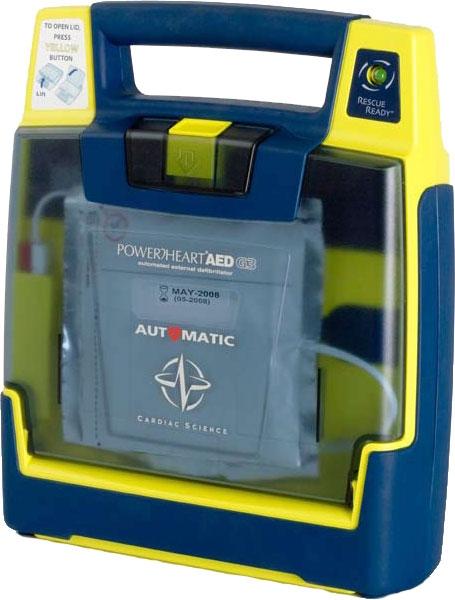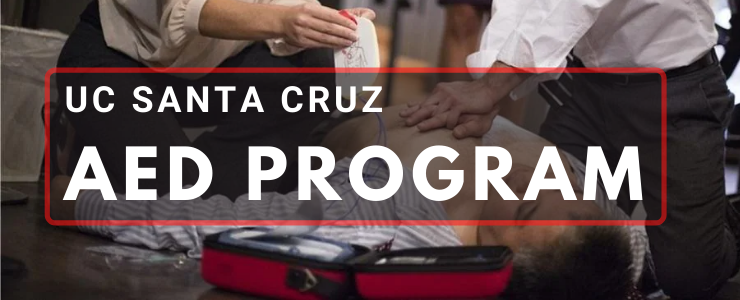About the Program
The UC Santa Cruz Automated External Defibrillator (AED) Program is a public safety initiative led by Risk and Safety Services. This program maintains the 60+ AEDs housed in various UCSC locations in addition to the processes through which new AEDs are added. The program ensures compliance with guidelines established by the County of Santa Cruz, the State of California Health and Safety Code, and manufacturer requirements for the use and maintenance of AEDs.
Table of Contents
Program Management
The Program Manager for the UCSC AED Program is Stephan Edgar under Risk and Safety Services. Stephan can be reached directly at sedgar@ucsc.edu.
Have an Event and Need an AED?
Starting in Summer 2023, Risk and Safety Services offers a free AED Loaner Unit to UC Santa Cruz sponsored or organized events. The loaner unit is equipped with a carrying case and can be used for both indoor and outdoor events. If you are interested in using the loaner unit, please contact the Program Manager at sedgar@ucsc.edu.
What is an AED?

An AED is a medical device used to treat people experiencing sudden cardiac arrest. An AED used quickly by first responders can save lives. An AED works by having a first responder place electrode pads at specific locations on a victim's chest. The AED detects the victim's heart rhythm and determines if it can be shocked into a normal rhythm. If so, the AED delivers a shock. AEDs give verbal instructions as soon as they are turned on, allowing any layperson regardless of training to use them.
Our publically accessible AEDs are located in cabinets with appropriate signage. Our AEDs are also all equipped with loud, audible narration. Additionally, our AEDs prompt the responder to initiate cardiopulmonary resuscitation (CPR) if they know how to do so.
Our AEDs
Below you will find an embedded map illustrating the locations of active AEDs we have on campus. If you frequent specific areas of campus, it is recommended that you familiarize yourself with your closest AED. You never know when your timely response can save a member of our campus community. You can also open the app in a separate tab or window.
Note: During Summer 2023, the roster of AEDs at UC Santa Cruz is under a campuswide audit to ensure accurate locations and serviceability. The map provided below will be updated to reflect the outcome of this audit. Please contact the Program Manager if you have any questions.


